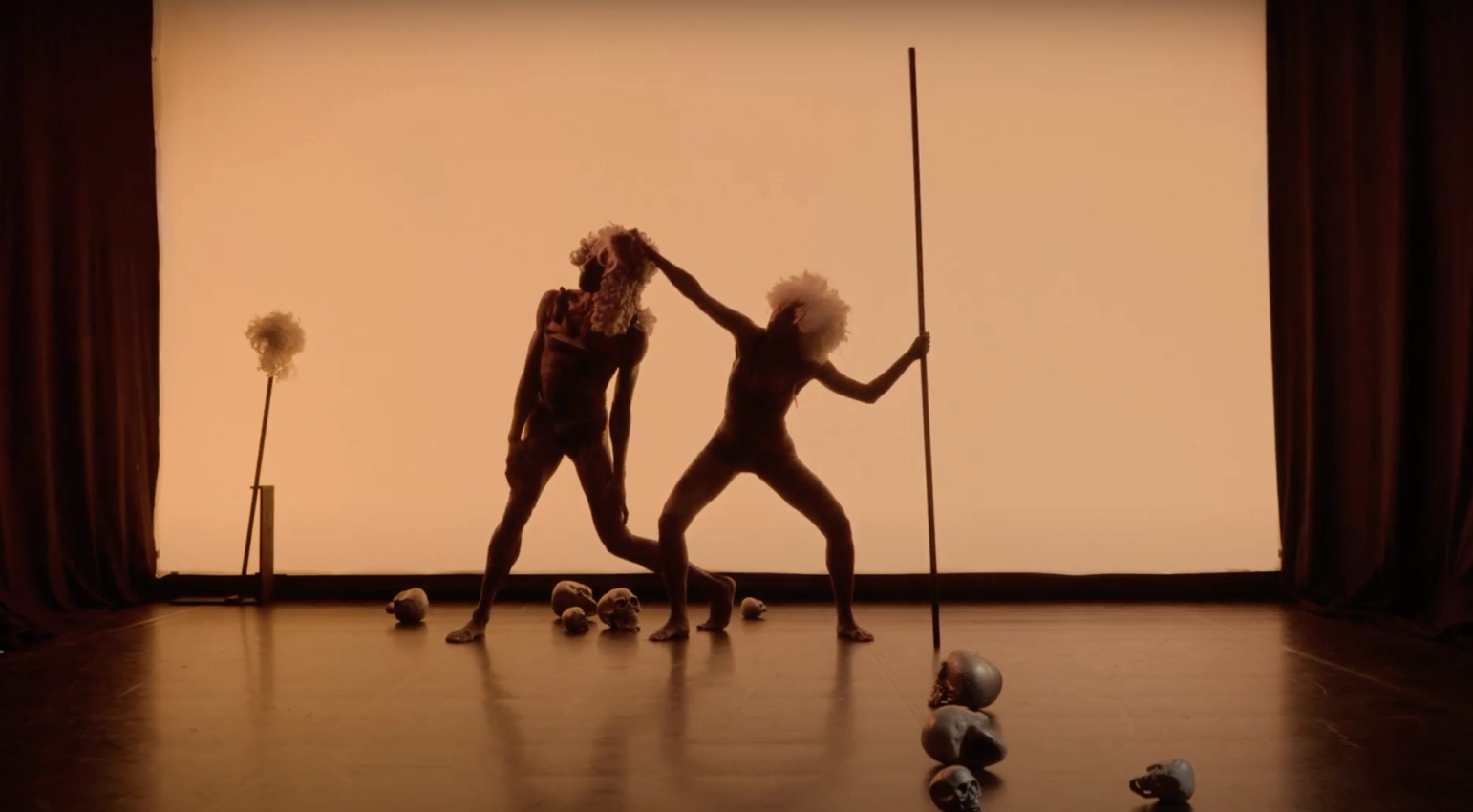
Blackness, Folded Figures, and Radical Choreography
If, for Locke, personhood is defined by propriety over a self, Lewis is more interested in flesh as a shared substrate, following Hortense Spillers’s distinction between the body and flesh.
How to choreograph “critical fabulation,”1 an “Afro-fabulation,”2 one that resists the imposed modes of personhood and evades the scripted sense of possession that Lewis references and dramatizes in her film on John Locke, A Plot A Scandal (2023)? If, for Locke, personhood is defined by propriety over a self, Lewis is more interested in flesh as a shared substrate, following Hortense Spillers’s distinction between the body and flesh. Flesh, as Spillers writes, is that which is discarded, torn apart, thrown overboard, fungible, and disposable.3 Flesh is what a body isn’t supposed to be, rather, it designates what it is meant to overcome—as Denise Ferreira da Silva has shown, how blackness is linked to affectability. What then of blackness and embodiment? How does blackness move us past this body/flesh distinction by showing how they are dependent upon one another? The sovereign body requires disposable flesh—not so much the sovereign’s two-body problem, but rather a sovereign body and unsovereign flesh. The radicality of blackness, then, is also phenomenological. Blackness collapses the distinction between body/flesh, it cuts through the double bind, because post-“emancipation,” Black bodies symbolize flesh—in the sense of what Spillers terms a social hieroglyphics. The interplay between body and flesh and the rejection of the terms of both versions of false captivity—the illusion of ownership of a body on the one hand, and the violent fiction that life can be reducible to mere flesh on the other—is where Ligia Lewis moves. A critical choreography, she and Corey Scott-Gilbert and Mame Diarra Speis aren’t so much thinking about these terms as inhabiting them: a live wire.
“Not done yet” repeats, as does a litany (of survival, to invoke Audre Lorde) about the demands of racial representation being tethered to death. This is not the only provocation, however, and it is not primarily speech that provokes and incites in the choreography. In the work, speech is depersonalized—like a ghost or an echo of the ancestral, and is enunciated not from an individual subject, but rather as a chorus. The dancers also provoke the audience, not antagonistically, but rather through a kind of overspill and undermining of the separation between performer and spectator. This is not an antiseptic performance; the dancers invade the space of the audience (with hands, body, feet), breaching the line of witnesses sitting on the bleacher benches that form a perimeter for the floor/stage. You are not separate from the performance, or the questions that it raises; they not only haunt but also confront the spectator. We are co-implicated in the sense of implicancy’s etymology: folded together. The dancers fold together. A body is folded onto another, they lock and become a centipede-like formation, moving in an undulating, accordion-like wave at one moment, then diffusing and becoming disparate while still, almost telepathically, connected. The body-mind(s) splits, but are never fully individuated—rather there is a shared uncanny flesh, with dancers at different positions along the wall twitching, spasming, jerking as though orchestrated through a kind of electric circuit and unseen force. While steady now study is a critique of the subject as a form of racial and colonial capture, with its attendant carceral metaphysics, the choreography embodies that critique as the group forms a fleshy meshwork, wherein there is—as Denise Ferreira da Silva terms it—shared “difference without separability.”4
NOTES
1 Saidiya Hartman, “Venus in Two Acts,” Small Axe: A Caribbean Journal of Criticism 12, no. 2 (June 2008): 11.
2 Tavia Nyong'o, Afro-Fabulations: The Queer Drama of Black Life (New York: New York University Press, 2018).
3 Hortense J. Spillers, “Mama's Baby, Papa's Maybe: An American Grammar Book,” in The Transgender Studies Reader Remix, ed. Susan Stryker and Dylan McCarty Blackstron (New York: Routledge, 2022), 67.
4 Denise Ferreira da Silva, “On Difference without Separability,” in 32nd Bienale de São Paulo: Incerteza Viva (São Paulo: São Paulo Bienale, 2016), 57–65.
Che Gossett is the associate director of the Center for Research in Feminist, Queer, and Transgender Studies at the University of Pennsylvania. Che co-edited a special issue of Transgender Studies Quarterly, "Trans in a Time of HIV/AIDS," with Professor Eva Hayward in 2020, and their 2022 syllabus on trans and non-binary methods for art and art history co-authored with Professor David Getsy won the College Art Journal Award for Distinction. They are also a postdoctoral scholar at Columbia Law School, and a visiting fellow at the Animal Law and Policy Program at Harvard Law School.
